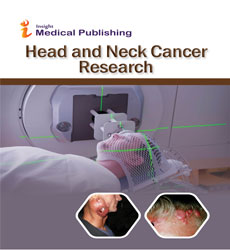To Lower your Risk for Head and Neck Cancers-Avoid Alcohol you Drink
Navid Ahmady Roozbahany
Hearing Disorders Research Center, Shahid Beheshti University of Medical Sciences, Iran
*Corresponding Author:
- Roozbahany NA
Hearing Disorders Research Center
Shahid Beheshti University of Medical Sciences, Iran
E-mail: ar.navid@sbmu.ac.ir
Received date: July 06, 2020;; Accepted date: July 20, 2020; Published date: July 27, 2020
Citation: Roozbahany NA (2020) To Lower your Risk for Head and Neck Cancers-Avoid Alcohol you Drink. Head Neck Cancer Res. Vol.05 No.02:01.
Copyright: © 2020 Roozbahany NA. This is an open-access article distributed under the terms of the Creative Commons Attribution License, which permits unrestricted use, distribution and reproduction in any medium, provided the original author and source are credited.
Abstract
Editorial
Head and neck cancer is used to describe a number of many malignant tumours that produce in a throat, larynx, nose, sinuses, and mouth.
Cancer began with healthy cells change and will become out of control and by forming a mass called tumor. A tumor can be cancerous or benign. A cancerous tumor is a malignant that means it will grow and spread to other body parts. In mostly head and neck cancers are squamous cell carcinomas. The type of cancer begun with the flat squamous cells that make with a thin layer of tissue on the surface of the structures in the head and neck. Some areas of the head and neck have a layer of moist tissue is known has mucosa. If a cancer is only found in the squamous layer of cells then called as carcinoma in situ. If the cancer is grown beyond the cell layer and moved into the deepest tissue then it is called invasive squamous cell carcinoma. If a head and neck cancer starts in a salivary glands the tumor will usually classified as the mucoepidermoid carcinoma, adenocarcinoma, and adenoid cystic carcinoma.
Types of head and neck cancer
Laryngeal and hypo pharyngeal cancer
Nasal cavity and paranasal sinus cancer
Nasopharyngeal cancer
Oral and oropharyngeal cancer
Salivary gland cancer
Symptoms of head and neck cancer may combine a lump or sore that does not heal, a sore throat that do not go far away, trouble swallowing and change in the voice. There may also be breathing problem, unusual bleeding and facial swelling.
About 75% of head and neck cancer is caused due to the use of alcohol or tobacco, and also smokeless tobacco. Other dangerous factors like betel quid, certain types of human papillomavirus, certain workplace exposures, radiation exposure, and Epstein-Barr virus. Around 90% of head and neck cancers are squamous cell cancers. The diagnosis is confirmed by tissue biopsy. The degree of spread may be determined by blood tests and medical imaging.
By not using tobacco or alcohol can reduce the risk for head and neck cancer. While screening in the general population does not appear to be useful, screening high risk members by examination of the throat might be useful. Head and neck cancer often is curried if it was diagnosed early. Although symptoms are typically poor if it is diagnosed late. Treatment may be include a combination of surgery, radiation therapy, chemotherapy, and targeted therapy
In 2015, head and neck cancers globally affected more than 5.5 million people they are 2.4 million mouths, 1.7 million throats, and 1.4 million larynx cancer and they caused over 379,000 deaths hence they are 146,000 mouths, 127,400 throats, 105,900 larynx cancer. In that they are the seventh most-frequent cancer and the ninth most-frequent cause of death from cancer. In the United States, about 1% of people are affected at some point of their life, and males are affected twice as most as females. The age limit for diagnosis in between 55 and 65 years old. The average age is 5-year survival following diagnosis in the developed world is 44-64%.
Symptoms of head and neck cancer are A lump in the neck, Change in the voice, A growth in the mouth, Bringing up blood, swallowing problems, Changes in the skin, Persistent earache
Open Access Journals
- Aquaculture & Veterinary Science
- Chemistry & Chemical Sciences
- Clinical Sciences
- Engineering
- General Science
- Genetics & Molecular Biology
- Health Care & Nursing
- Immunology & Microbiology
- Materials Science
- Mathematics & Physics
- Medical Sciences
- Neurology & Psychiatry
- Oncology & Cancer Science
- Pharmaceutical Sciences
